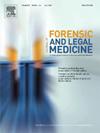指纹专家在指纹痕迹个性化测试中提取和评估细节的可靠性
IF 1.2
4区 医学
Q3 MEDICINE, LEGAL
引用次数: 0
摘要
本研究考察了指纹专家在分析潜在指纹痕迹时评估细节个性化价值的可靠性。尽管在刑事调查中广泛使用指纹证据,但越来越多的人担心审查员的可变性和缺乏验证协议,这促使人们对法医实践进行了严格的审查。在这项研究中,30名波兰指纹专家被要求在两个不同质量的指纹痕迹中识别和评估7个细节。专家们对每个细节进行分类,并以五分制对其个性化价值进行评级。采用Krippendorff’s alpha评估评分者间信度,采用线性回归和相关分析选择频率与个性化价值之间的关系。结果显示,专家间在细节选择和价值评估方面的一致性较低,高质量痕迹的alpha系数为0.39,低质量痕迹的alpha系数为0.42。我们发现,一个细节被选择的频率与其感知到的个性化价值之间存在很强的负相关(高质量的痕迹r = -0.84,低质量的痕迹r = -0.89),这表明通常被选择的特征被认为是不那么具有歧视性的。这些发现表明,虽然专家们可能在群体层面上对一般模式趋同,但他们的个人评估往往不一致。这项研究强调了对专家结论进行系统核查的必要性。鉴于观察到的可变性,依赖单个未经验证的指纹意见会带来很大的错误风险。要求由多名独立专家编写初步报告可以提高结论的可靠性,减少对证据提出质疑的脆弱性。本文章由计算机程序翻译,如有差异,请以英文原文为准。
Reliability of fingerprint experts in extracting and evaluating minutiae in individualization tests of fingerprint traces
This study examines the reliability of fingerprint experts in assessing the individualization value of minutiae during the analysis of latent fingerprint traces. Despite the widespread use of fingerprint evidence in criminal investigations, growing concerns about examiner variability and the lack of verification protocols have prompted critical scrutiny of forensic practices. In this study, 30 Polish fingerprint experts were asked to identify and evaluate seven minutiae in two fingerprint traces of differing quality. Experts classified each minutia and rated its individualization value on a five-point scale. Inter-rater reliability was assessed using Krippendorff’s alpha, and the relationship between selection frequency and individualization value was analyzed via linear regression and correlation.
Results revealed low inter-expert agreement in both minutiae selection and value assessment, with alpha coefficients of 0.39 for the trace of high-quality and 0.42 for the traces of a lower-quality. A strong negative correlation was found between how often a minutia was selected and its perceived individualization value (r = –0.84 for the trace of a high-quality and r = –0.89 for the trace of a lower-quality), suggesting that commonly selected features were viewed as less discriminative. These findings indicate that while experts may converge on general patterns at the group level, their individual assessments are often inconsistent.
The study underscores the need for systematic verification of expert conclusions. Given the variability observed, relying on a single unverified fingerprint opinion poses a substantial risk of error. Requiring that initial reports be prepared by multiple independent experts could enhance the reliability of conclusions and reduce vulnerability to evidentiary challenges.
求助全文
通过发布文献求助,成功后即可免费获取论文全文。
去求助
来源期刊

Journal of forensic and legal medicine
MEDICINE, LEGAL-
CiteScore
2.70
自引率
6.70%
发文量
106
审稿时长
57 days
期刊介绍:
The Journal of Forensic and Legal Medicine publishes topical articles on aspects of forensic and legal medicine. Specifically the Journal supports research that explores the medical principles of care and forensic assessment of individuals, whether adult or child, in contact with the judicial system. It is a fully peer-review hybrid journal with a broad international perspective.
The Journal accepts submissions of original research, review articles, and pertinent case studies, editorials, and commentaries in relevant areas of Forensic and Legal Medicine, Context of Practice, and Education and Training.
The Journal adheres to strict publication ethical guidelines, and actively supports a culture of inclusive and representative publication.
 求助内容:
求助内容: 应助结果提醒方式:
应助结果提醒方式:


